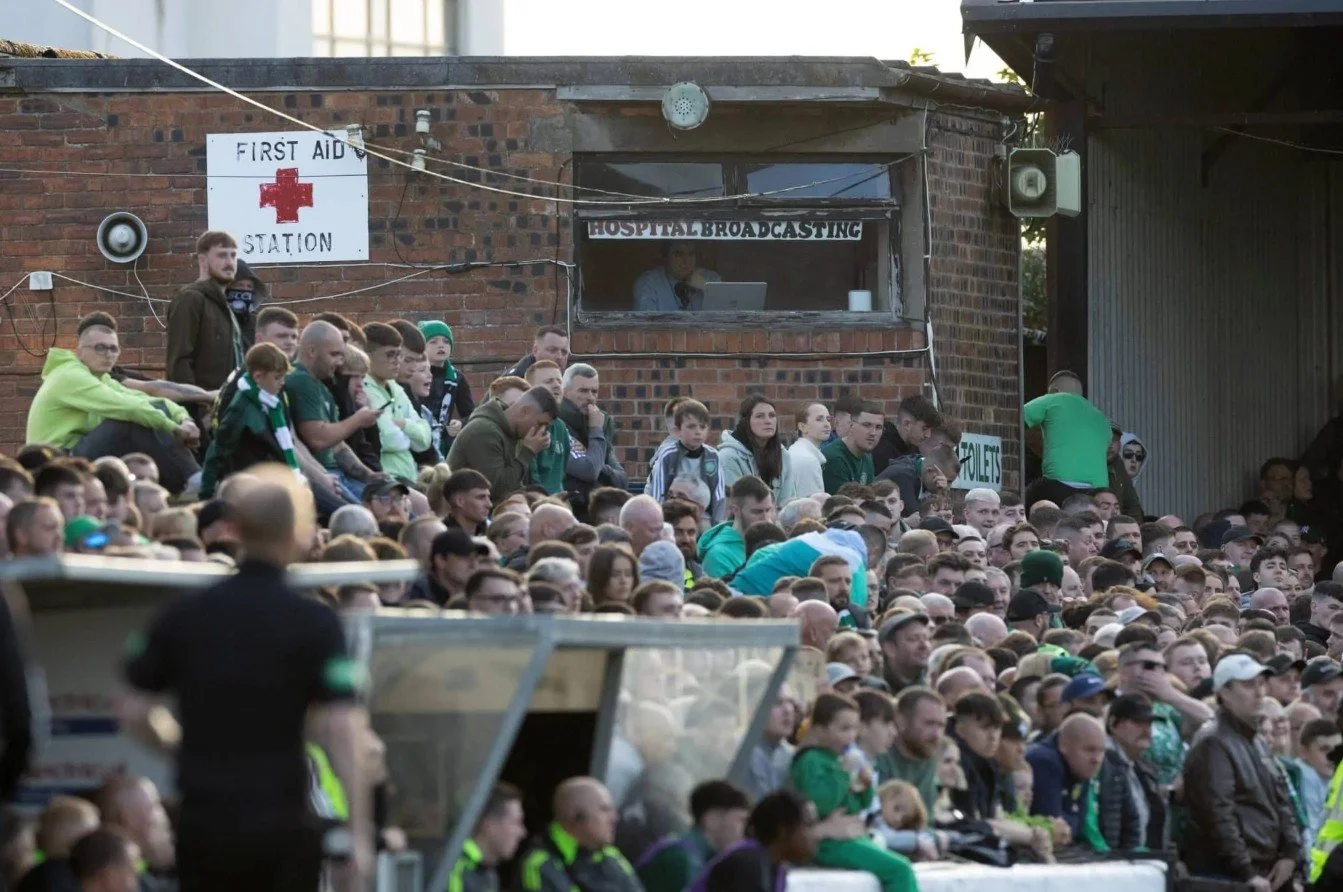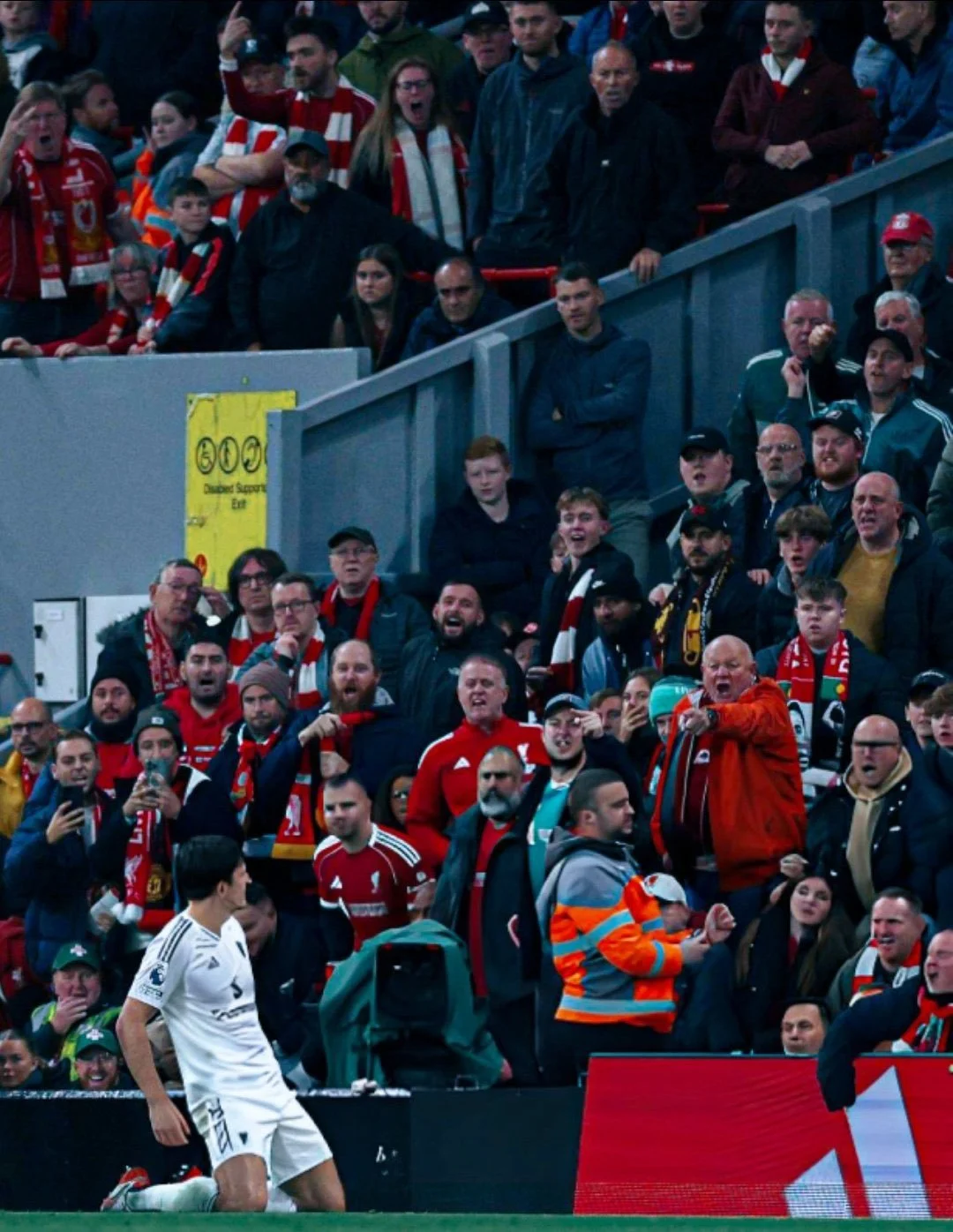Words: Jonee // @Jonee13
The most important thing a supporter can do for their team is support that team. Yes, it may seem obvious, but it really is that simple. Although, increasingly, it comes with its own challenges — many of them created by the clubs themselves.
Let’s not start with the difficult aspects of being a supporter. This game we all love is, or at least should be, about love for a team, and the communion between us, the players, and those jerseys. So, I’d rather begin with a bundle of stories, moments, and memories — keeping in mind that as soon as you dive into memories, things get a little fuzzy. But then again, some of you support Benfica, Chelsea, or Lazio, so who am I to fully understand how any of this works?
Today I’m writing about something a lot of us truly love: the famous Away Day. Simply put, it’s when we travel somewhere to support our club and the current players running up and down for that same badge. It’s easy to understand. And yet, incredibly difficult to explain if you’re not a sports fan. But don’t give up just yet — take this trip with me, and hopefully, by the end of this article, you’ll have a better understanding of why the Away Day means so much to us.
Let’s start at the beginning.
Kilmarnock fans at Firhill, home of Partick Thistle, in the Scottish Championship.
Photo Credit: GlasgowLive
My first Away Day was a game in Aveiro, where I went to watch my FC Porto face the local team, Beira-Mar — a historic club that has since plunged into the depths of lower-division football. This was in January 1990, and I went with my father. I was only 5 years old — a wide-eyed kid with an unreasonable love for a club, a love that still burns like an uncontrollable fire. My team won. But, amazingly, that’s not the most important memory from that day.
The memory is being surrounded by my “brothers in arms on enemy ground” — us versus them — the chants (not entirely sure I knew any actual songs), the screaming, the support for our team. That moment, that day, still ignites me. It still makes me want to stand up and scream “Porto! Porto! Porto!”
For most of my daily life, I’m a reasonable man. I enjoy peace and quiet, and I’m not particularly interested in drama or shouting matches. But — and it’s a big but — when it comes to supporting my club, I run hot. All the time.
The away day is a sacred experience for any football fan. It brings you closer to your club, to those shirts. You feel like an extra player — hell, if needed, I’d jump in and play 15 minutes, but let’s hope it never comes to that. One of the beautiful things about travelling to support your club is that it doesn’t have to be 1,000 miles away. It could be a cross-town game and still mean just as much. The meaning is the same.
So don’t feel bad if you’ve never travelled far to support your club. One of your “brothers” has done it, and they’re representing you as well. In that sense, all of us are everywhere at all times, when it comes to our teams.
Supporting a football club is a visceral experience. Most of us can’t explain why we support one club or another, and even when we try, the reasons are usually things that developed years into our fandom. They explain why we continue, not why we started. Every mile I’ve travelled to support my club has only deepened my love for it — in ways I can’t fully understand, let alone explain.
Most of my Away Days — especially the long-distance ones — end with the match result being a secondary concern. The journey is about the unexpected nod from a stranger on the train, the smile, the out-of-nowhere chat with someone baffled to see your club’s colours in their corner of the world. I’ve been greeted and cheered, but also jeered and insulted — and I wouldn’t change a thing.
An away day requires two things: one is simple — a football match. The other is a bit more complicated — a group of away supporters. Both represent the colours. Not equally. Sometimes it’s the away fans who leave the lasting impression, marking whatever place we visited. Not all home supporters welcome that. Some places are tough to visit as an away fan. Fair play to them. It’s their home. Do as you please. But you’re not stopping me from singing and screaming for my colours. That will never change.
Aberdeen fans at Victoria Park in Dingwall, home of Ross County and considered one of the best away days in Scotland.
Photo Credit: Football Ground Guide
Travelling supporters face many challenges: logistics, ticketing, finding the best routes, places to eat, or even places to be safe. I’ve travelled with official supporters’ groups, with friends, and alone. And I have to say, the solo journeys are probably my favourite — from landing in Istanbul or Belgrade and feeling like I’ve stepped into enemy territory, to sometimes being greeted with immense respect by local fans, or finding a taxi driver who supports the local rival and is thrilled to take me to the best spots. After all, the enemy of my enemy is my friend, supposedly.
People flock to manifestations of love. We’re wired that way, no matter our upbringing or mind-set. So when a football supporter shows up in your part of the world, it tends to leave an impression.
The Away Day is deeply ingrained in football culture and history. It builds bridges between “us” and “them”, between our club and others. We are ambassadors for our club every time we travel to support it. We carry decades of history, thousands of supporters, hundreds of players. That responsibility should never be taken lightly.
From the jerseys to the songs, the tattoos, scarves, and sheer presence — everything counts. We are an integral part of the club. And the club is part of us.
Many of my adventures supporting my club have required a bit of madness: two flights just to get there? Sure. Eight hours on a train? Definitely. Channel crossing? YES. And every single one of those journeys lives in my memory. I’m not alone in that. Ask anyone regularly involved in attending away days and they’ll tell you the same: from 20-mile trips to international clashes, these are moments we keep close to our hearts.
The football calendar is an eighteen-carat loop of ritual. The home game is the comfort blanket—familiar seating, familiar turnstiles, and familiar faces. But the true, unadulterated expression of devotion, the very essence of support is found in the Away Day. It is more than a match; it is a pilgrimage, a test of endurance, and a profound communal rite. It is a day defined by miles travelled, tenners spent, songs sung, rounds bought, and a defiant sense of belonging that few other cultural events can replicate.
To understand the spirit of the away day is to understand the soul of any football fan. It is a spirit forged in the early morning chill of a service station car park, distilled on a sticky-floored coach, and screamed out from a caged corner of a hostile, unfamiliar ground. It is the purest form of loyalty, stripped of home comforts and executed with nothing but grit, camaraderie, and an unshakeable, often irrational, hope.
Around 400 Bromley fans at the Abbey Stadium, home of Cambridge United.
Photo Credit: Football Home & Away Days
The away day begins not with the journey, but with the scramble for the ticket. Securing a place in the coveted visiting section is often an operation worthy of a military campaign. In the tiered hierarchy of modern football, tickets are allocated based on loyalty points, attendance history, and the lottery of hitting ‘refresh’ on the ticketing site at the right moment.
This initial effort immediately filters the half-interested from the truly devout. The one who succeeds has earned their right to travel; a small, paper or digital badge of honour confirming their status among the select few. This pre-match tension—the fear of missing out—lends the eventual ticket-holding a sacramental quality. It is a golden ticket, validating the subsequent commitment of time and money.
Once secured, the planning commences. Transport is paramount. For the faithful, this usually means the official club coach—the “beast” or the “bus”—which offers the cheapest and most direct route, though seldom the most comfortable. The coach is a rolling microcosm of the fan base: the veterans in the back, the nervous newbies near the front, and the perennial joker somewhere in the middle. It’s a shared experience of anticipation, often involving a pre-packed bag of snacks, a bigger bag of cheap lager in cans, a questionable playlist, and a collective, nervous energy that thickens the air long before the destination is in sight.
The alternative—the train journey—offers a different, though equally vital, flavour of the away day. A group of lads taking over a carriage, singing slightly off-key versions of club anthems, turning the mundane rail network into a temporary, moving fortress. This is where the initial socialising and myth-making begins. Old memories are relived, predictions are debated with theatrical seriousness, and the immediate focus of life narrows down to one single, rectangular patch of grass three counties away.
Celtic fans at Somerset Park, home of AyrUnited, in a pre-season fixture, 2024.
Photo Credit: Football Ground Guide
The physical act of travelling is integral to the spirit. It transforms a leisure activity into a pilgrimage. The further the distance, the more profound the dedication. A three-hour drive to a rival stadium in the north, or a six-hour trek to the coast, is a conscious sacrifice that deepens the emotional investment in the match. The journey is the crucible where casual acquaintances become battle-forged friends.
Service stations, often drab and identical, become temporary outposts for the travelling fan. Here, in the anonymity of the M6 or the A1, you might see small pockets of rival supporters sharing the same Costa queue, all united by the same mission. There is a silent, mutual understanding: we are the travelling few, the ones who commit.
The most anticipated stop, however, is the pre-match pub. This is where the true atmosphere ignites. Often miles from the ground, or occasionally a designated watering hole near the station, the away pub offers a fleeting moment of respite for you and your fellow travelling supporters to rally. For a few hours, a local boozer in an unfamiliar town is colonised, its quiet atmosphere replaced by a wall of sound, the clinking of glasses, and the distinctive smell of cheap beer.
The pub stop serves a dual purpose: it settles the nerves and it provides the necessary fuel for the vocal efforts to come. It’s where the chants are rehearsed, the team news is absorbed, and the collective anxiety is either drowned out or amplified into a defiant buzz.
Arriving in the oppositions city is a distinct feeling of invasion. Everything is slightly off-kilter: the street signs, the architecture, the local accent. The away fan, clad in their colours (or perhaps conservatively wearing a plain jacket to avoid hassle), is immediately identifiable.
The walk from the pub or the station to the ground is a procession. It is where the away support begins to find its volume, sensing the proximity of the battleground. There is a palpable shift in the atmosphere as the contingent moves through the neighbourhood streets. Local residents peek from windows, and groups of home fans offer varying degrees of banter, curiosity, or hostility. The energy is electric, charged with tension and tribalism.
The opponents’ stadium, seen for the first time in person, is a monument, a reflection of the weekend’s rival. It is too big, too new, or too old and creaking. It doesn't matter; it is the physical symbol of the enemy.
The final element of the journey is the approach to the away end turnstiles. This is where the solidarity reaches its peak. Joining the queue involves being corralled, checked, and often treated with a level of suspicion that is unique to visiting supporters. This perceived 'othering' by stewards and police only strengthens the bond among the travelling contingent. Every hurdle, every pat-down, every unnecessary delay reinforces the feeling that they are outsiders, the devoted few who have travelled into the unknown for their cause.
Celtic fans at Ibrox during an Old Firm match, 2019.
Photo Credit: SNS Group
The physical experience of the Away Day is often defined by uncomfortable geography. Modern grounds, while impressive, frequently relegate the away support to a cramped, often vertically steep, corner of the stadium—the literal ‘away end’. These sections are deliberately segregated, caged off with netting, and placed as far from the action (and the home fans) as possible.
The view, more often than not, is compromised. It might be too high, making the players look small, or too low, offering a restricted sightline. The amenities are invariably basic: a tiny concession stand selling lukewarm, overpriced pies and weak tea, and often a queue for the toilets that seems to last half of the match.
Yet, this intentional discomfort is paradoxically central to the spirit. It creates a shared adversity. The away fan isn’t there for luxury; they are there to suffer alongside their comrades. The uncomfortable seat, the poor view, the terrible catering—it’s all part of the tradition, a badge of honour. It separates the tourist from the true believer.
The volume of the away support, contained within this steel and concrete box, is immense. It is a sonic boom of defiance. Where the home support might be vast but diffused across a whole stadium, the away support is concentrated, creating a wall of noise that punches far above its weight. The chants are not merely songs; they are a declaration of presence, a psychological weapon aimed at destabilising the home side and providing the only pocket of familiarity for the players on the pitch.
For the away fan, the ninety minutes are experienced with a heightened, almost unnatural intensity. Every pass, tackle, and refereeing decision is amplified. The stakes feel impossibly high, perhaps because of the sheer effort expended just to be there. Having travelled three hundred miles and spent a small fortune, a defeat feels not just like a loss of points, but a personal insult and a colossal waste of time, effort and dedication.
The relationship between the away support and the players is different, too. The travelling faithful feel closer, more intimate, with the eleven players on the pitch than the tens of thousands in the home sections. When the home crowd is quiet, the away end is the only voice the players can hear. This creates a special, unspoken covenant: We are here for you, no matter what. You run for us.
But, the most defining moment of the Away Day is the away goal celebration.
When that ball hits the back of the net—often against the run of play, often after a long period of suffering—the explosion of noise and movement is unparalleled. It is pure, unconfined catharsis. The goal is a momentary, violent overthrow of the established order. The celebration involves a scramble down rows of seats, strangers hugging strangers, beer flying, and an eruption of sheer joy. For a few, brief, glorious minutes, that hostile corner of the ground belongs entirely to the visitors. It is a transcendent moment, the reward for the sacrifice, the point at which the entire, arduous day justifies itself.
The goal celebration also serves as an act of silent revenge against the home fans. It is the moment they are silenced, humbled, and forced to acknowledge the presence of the devoted few who have travelled to witness their team's triumph
Harry Maguire celebrates in front of the home support at Anfield, 19 October 2025.
Photo Credit: Football Away Days








